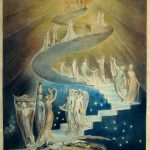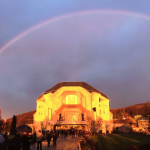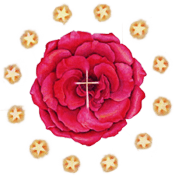Pilgrimage To Turkey - Optima
1996 Pilgrimage to Turkey
Mysteries of the Logos and Sophia
April 16 - May 3, 1996
One of the traditional ways of bringing a spiritual ideal to expression is to go on a pilgrimage. In 1996 the Sophia Foundation of North America undertook its first spiritual pilgrimage, with a group of almost thirty people, to sacred sites in Turkey, including the sacred sites of Ephesus and Patmos, places associated with St. John, who received the content of the Book of Revelation while in exile on the island of Patmos and later wrote the Fourth Gospel in or near Ephesus, three years before he died there at over one hundred years of age. Of the many extraordinary places we visited, our ultimate goal was Ephesus, the site not only of the remarkably well-restored ancient city, but also of the remains of the temple of Artemis, and of the ruins of St. John’s basilica, where John the Evangelist’s grave is located. And nearby Ephesus is the site of the restored house of the Virgin Mary, where she spent her last days, and where Mary’s ascension took place (“assumption of the Blessed Virgin Mary”). This first spiritual pilgrimage was very much under the sign of John and Mary, who stood beneath the cross at the crucifixion of Jesus Christ. Christ spoke the words of the cross to them: “Behold thy son! Behold thy mother!” (John 19:26-27). Then, in the Gospel, follow the words: “And from that hour the disciple took her to his own home.” It was the disciple John - later known as the Apostle John - who accompanied Mary to Ephesus and built the house for her there. According to one tradition, after her death, he returned to Jerusalem where, like his brother, the Apostle James, he died a martyr’s death. Through the association of John and Mary with Ephesus, it is THE place of origin of Sophianic Christianity.
The first place of destination of our pilgrimage was Istanbul, so named since the Turks captured it in 1453. The city - originally the Greek colony Byzantium - was made the capital of the Roman Empire by Constantine the Great in 330 AD and thereafter was named Constantinople. In the sixth century AD Emperor Justinian had the huge domed basilica Hagia Sophia built there, which became the spiritual center of the Eastern Church, whose sacral language at that time was Greek, just as Rome became the central city of the Western Church, whose sacral language was Latin. When Justinian entered Hagia Sophia at the festival of its consecration in 537 AD, reportedly he exclaimed: "Praise and glory be to God the Most Holy who deemed me worthy of accomplishing such a work. I have surpassed even you, Solomon!" Now accessible to the public as a museum, Hagia Sophia was the first sacred site we visited, among other places of interest in Istanbul.
Then we traveled to the ancient site of Troy. Troy was the last citadel of ancient wisdom prior to the flowering of Greek civilization. There, in an underground temple, the palladium was housed, a symbol of holy wisdom bestowed by the Goddess Athena. The pre-Christian Sophia Impulse flowed in through the Goddess Athena, leading over from the cosmic wisdom of the ancient mysteries to the human wisdom such as came to expression in Greek philosophy. In our time it is the task of Mary Sophia to assist in leading human beings back to cosmic wisdom again. Thereby Mary Sophia is concerned to help us discover the inner light symbolized by the palladium, which now lies hidden beneath the city of Istanbul, having been brought from Troy to Rome after the defeat of the Trojans by the Greeks and later, by Constantine the Great, from Rome to Constantinople.
After Troy, we visited the ruins of Pergamum, the third of the early Christian communities spoken of by St. John in Revelation, with its significant temple ruins. And then we journeyed to the sites of most of the remaining six communities referred to by John, culminating in the visit to Ephesus, the location of the first community.
The great temple of Artemis in Ephesus was one of the seven wonders of the ancient world. It existed in various forms as a sanctuary for the much-revered wooden statue of the Goddess. In its most spectacular form, a marble temple 360 feet long and 180 feet wide, it was completed in 450 BC.
In this temple, Pythagoras, Heraclitus, Plato, and many others were initiated. The initiations that took place there led to an experience of oneness with the cosmos and the whole earth, revealing the existence of the human soul in the planetary realm prior to incarnation and the relationship of the human being to the kingdoms of nature upon entering into incarnation.
Ephesus was looked upon as the last great mystery center to transmit the glorious majesty of the spiritual tradition of the orient. And Artemis represented the synthesis of the all-embracing wisdom that flowed through the oriental culture of antiquity. All the more overwhelming was the tragedy of the destruction of this mystery center at the hands of the crazed Herostratus, who set fire to the temple in order to attain immortal fame, supposedly on the same night as Alexander the Great was born in 356 BC. The young Alexander, when he visited Ephesus twenty-two years later, offered to pay for the reconstruction of the temple. The restored temple, however, remained merely an external sign of the once glorious mystery center and was plundered and destroyed by the Goths in 263 BC. Later, stones from the ruins of the temple were utilized by early Christians for the building of churches in Ephesus such as the Basilica of St. John and the Church of the Virgin Mary, the first church in Christendom to be consecrated to Mary.
The glory that had once lived in the celebration of the Artemis mysteries in Ephesus faded away. Yet a new spiritual era began when John and Mary arrived there in AD 39, six years after the Mystery of Golgotha. The Virgin Mary lived in Ephesus for five years. Later, a chapel was built upon the foundations of her house ("Meryem Ana Evi"). All the apostles, with the exception of Thomas, who was in India, came to her death-bed to pay their last respects and to receive her blessing before she ascended into heaven.
We visited the house of the Virgin Mary, which was discovered in an extraordinary way through the clairvoyance of Anne Catherine Emmerich. Just as Heinrich Schliemann,the great German archeologist, discovered Troy on the basis of his careful reading of Homer's description of the Trojan war, so two Lazarite priests found the house of Mary through taking seriously Anne Catherine Emmerich's vision of it, which she had described in detail to the German Romantic poet Clemens Brentano, who wrote down her description. Without going into details about this remarkable discovery made in 1891, sixty-seven years after Anne Catherine Emmerich's death, it is miraculous that this sacred place, the home of the Virgin Mary, visited by the apostles, has been restored.
Many people who have been to this sacred site have spoken of the peace and blessedness that reigns there, and some people have had profound spiritual experiences at this site. Thus, at a recent conference in Holland on the theme of "Mary", one of the participants reported his experience when he had visited Meryem Ana Evi ("the house of Mother Mary") seven years ago. There he had the mystical experience known as the "gift of tears". He wept for hours on end. This experience had a strong impact on his life and brought him into an inner relationship with - and search for - the Virgin Mary. This experience calls to mind the words purportedly spoken by Jesus addressing humanity through the twentieth-century Italian mystic Maria Valtorta: "You are redeemed by the blood of Christ and the tears of Mary." The blood of Christ flowed on Golgotha, and the tears of Mary flowed at Ephesus. As Anne Catherine Emmerich said: "Behind the house, at a little distance up the hill, the Blessed Virgin had made a kind of Way of the Cross. She had never failed, ever since Our Lord's death, to follow His path to Calvary with tears of compassion." In this sense, Ephesus may be regarded as the feminine spiritual counterpart to Golgotha.
After Ephesus, we visited Patmos, which is a small, rocky island that can be reached in a few hours by boat from Ephesus. In 1088 a Johannine monastery was built there, above the cave where St. John is said to have lived, and where he received the mighty revelation of the Apocalypse. The aged apostle, after having been summoned from Ephesus to Rome, was banished to the island during the reign of Emperor Domitian (81-96). After the murder of Domitian, John returned to Ephesus, where he lived in a small dwelling close to the ruins of the great temple of Artemis. Here he wrote the Gospel of St. John, which begins with the sentence: "In the beginning was the Word (Logos)." This points to the Logos tradition that lived in the mystery center at Ephesus and which can be traced back at least to Heraclitus (sixth/fifth centuries BC) for whom the Logos was the Creative Fire of all creation and existence. John was the transmitter of the Logos mysteries, just as Mary represented the Sophia mysteries. The two of them were united spiritually beneath the cross on Golgotha when Jesus Christ spoke to them: "Woman, behold thy son; behold thy mother." From that time John cared for Mary, and he accompanied her to Ephesus when the persecution of Christians intensified in Jerusalem and elsewhere in Palestine. This "emigration" to Ephesus was surely not arbitrary; rather, it was a consequence of the guidance of world destiny, ensuring that the new Christian mysteries would connect onto the ancient mystery wisdom tradition. We need only contemplate the extraordinary fact that the water flowing from the spring at the house of Mary passes through the Ortygia Grove half a mile away, where - according to legend - Apollo and Artemis were born.
This pilgrimage opened the possibility of entering into a tangible experience of these profound mysteries, following in the footsteps of John and Mary, bearers of the new Christian mysteries. Already in 1996 on our spiritual pilgrimage to Ephesus and Patmos, it was clear that we would one day journey to Provence, to follow in the footsteps of Lazarus/John, Martha and Mary Magdalen there. This took place in 1998. Prior to this, we had already decided to go on a pilgrimage to the Holy Land, which we undertook in 1997




